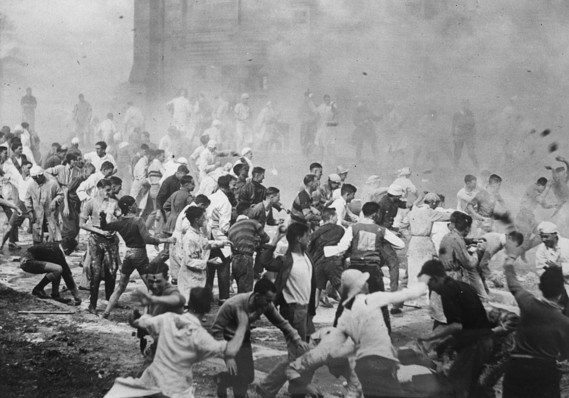 Getty Images
Getty Images
Washington used to be a quiet place in August and Wall Street took a siesta, but Donald Trump has changed all that. China is in the cross-hairs again, the Federal Reserve is under the gun — and investors are in a panic.
See: MarketWatch economic calendar
Let’s briefly review. The Federal Reserve cut interest rates last week largely because it’s worried about the fallout from the White House trade fight with China.
Trump then upped the ante by threatening more tariffs, snuffing out a Wall Street rally that had pushed stocks to record highs at the end of July. Now investors are banking on another Fed rate cut in September.
Read: Trump threat to lift Chinese tariffs puts pressure on Fed to cut interest rates again
The high drama overshadowed reports showing a surge in consumer confidence and another solid increase in new jobs in July that kept the unemployment rate near a 50-year low of 3.7%. By most measures, the U.S. economy is still doing pretty well.
Read: U.S. adds 164,000 new jobs in July to keep unemployment near 50-year low of 3.7%
The latest temperature readings on the economy this week won’t tell us a whole lot more. Job openings remain high, inflation is still tepid and layoffs are extremely low.
Read: ‘Left behind’ Americans start to catch up as strong labor market boosts job prospects
The biggest source of news is likely to come, once again, from the occupant of 1600 Pennsylvania Ave. What’s next? Who knows. Only he knows the answer.
And that’s the problem. Business executives can’t plan and invest with any certainty the longer the dispute drags on. And no one knows if Trump will change his mind as he’s done several times already. Twice he threatened additional tariffs on China only to delay them.
The ramifications extend well beyond U.S.-China trade ties.
The dispute has engulfed the rest of the world and contributed to a global economic slowdown. While some parts of the U.S. economy have been insulated from the turmoil, key segments such as manufacturing and agriculture have taken a hit.
Read: Trade fights sap manufacturers as growth falls to slowest pace in three years
If the situation gets much worse it could endanger a record U.S. economic expansion now in its 11th year.
“The escalating U.S.–China trade war and the global economic slowdown, like termites in a house, are fast at work already doing real damage of the foundation of this economic expansion,” said chief economist Scott Anderson of Bank of the West.
The Fed, for its part, could continue to cut U.S. interest rate that are already at very low levels, but there’s simply not much the central bank can do if the trade spat between the world’s two largest economies intensifies.
Read: Fed cuts interest rates by quarter point, but won’t commit to more easing
“Slashing the fed funds rate to stimulate the economy under present circumstances is like preparing a car for a long drive by filling its gas tank when it’s disabled with multiple flat tires,” argued Bernard Baumohl, chief global economist of The Economic Outlook Group.
“Simply put, we have reached the limits of what low interest rates can do when the Trump administration fails to grasp the damage its assault on trade and globalization is having on the world economy,” he added.





